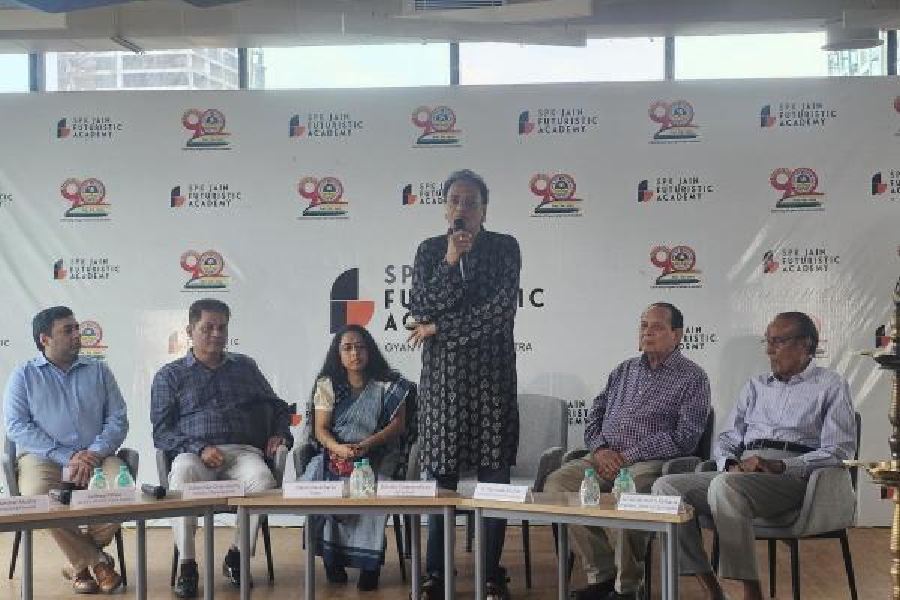A school in New Town will not relegate performing arts to the sidelines of extra-curricular activities but will actively encourage and nurture such talents among students. As proof of that intent, the SPK Jain Futuristic Academy in New Town inaugurated facilities to host such activities in recent months. Two 900sq ft music rooms, a state-of-the-art dance studio and three versatile art spaces were opened for use in presence of guests — a painter, a dancer and a singer.
“The dance studios can be used as performance spaces. We will start music with vocal music. The art spaces can host varied activities, from pottery to painting on canvases. Culture is the food of the soul and what we want is the all-round development of students,” said Darshan Mutha, director and principal of the academy.
Jaideep Patwa, the secretary of the school, pointed out that the architect had been asked not to design the building only for academic activities. Children, he said, learn a lot simply by observing. The art teacher who had been recruited was not a conventional art degree holder but a young man, who is still a student himself and simply spent his spare time at the school, drawing and painting to his heart’s content. “The children watch him in action, absorbed with his brush and canvas. What they absorb from him will be up to them,” he said.
The time table is also fluid, and would follow the inclinations of each student. “If a child wants to do mathematics, the bell will not ring to wean him off his favourite subject and make him open a different book. He can continue till he pleases even if his classmates move on to classes in other subjects. It will be the class teacher’s responsibility to monitor what each student does and for how long so that the subjects he is deficient in and avoids can be addressed as well,” Patwa said.
The system owed its root to his goal to blur the lines between academic education and artistic cultivation. “I have never heard of such a liberal education system,” marvelled Dipannita Acharya, a folk singer, after she presented a song before a room full of teachers and students.
The performance spaces would be let out for use by the community after school hours. “Once classes get over, the building stands unutilised. So we thought of opening these spaces to groups of individuals or organisations,” Patwa said.
